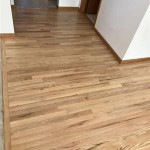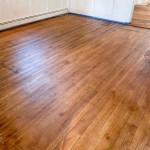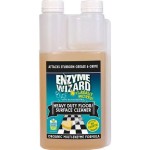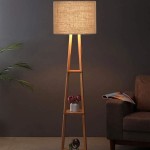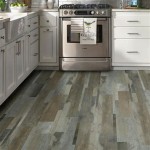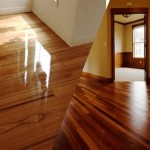Can You Use a Steam Mop on Wood Floors? Considerations and Best Practices
The question of whether a steam mop can be safely and effectively used on wood floors is a complex one, generating debate among homeowners and flooring professionals alike. While steam mops offer a seemingly convenient and hygienic method for cleaning, the high heat and moisture they produce raise concerns about potential damage to the wood. Addressing this requires a nuanced understanding of different wood floor types, the mechanics of steam cleaning, and proper usage techniques to mitigate risk.
Wood flooring comes in a variety of forms, each with varying levels of susceptibility to moisture damage. Solid hardwood, engineered hardwood, and laminate are the most common types. Solid hardwood, crafted from a single piece of wood, is known for its durability and longevity. Engineered hardwood comprises a thin layer of real wood veneer adhered to a core of plywood or high-density fiberboard. Laminate flooring, on the other hand, is a synthetic product designed to mimic the appearance of wood, typically consisting of a photographic applique under a clear protective layer.
The finish applied to wood floors plays a crucial role in their resilience to moisture. Surface finishes, such as polyurethane or varnish, create a protective barrier atop the wood, preventing water penetration. Penetrating finishes, like oil or wax, soak into the wood fibers, offering some protection from within but leaving the surface more vulnerable to moisture absorption. The type of finish significantly impacts the floor’s ability to withstand the heat and moisture generated by steam mops.
Understanding the Risks Associated with Steam Mops on Wood
The primary concern with using steam mops on wood floors is the potential for moisture damage. Wood is a hygroscopic material, meaning it readily absorbs and releases moisture from the surrounding environment. Excessive moisture absorption can lead to a range of problems, including cupping, warping, and buckling. Cupping refers to the edges of the wood planks rising higher than the center, creating a concave appearance. Warping involves uneven distortion of the wood, while buckling is the lifting of the planks from the subfloor.
Heat, in conjunction with moisture, exacerbates these risks. The high temperature of the steam can cause the wood to expand rapidly, potentially stressing the adhesive bonds in engineered floors or weakening the protective finish on solid hardwood. Over time, repeated exposure to steam can compromise the integrity of the flooring, leading to irreversible damage and costly repairs.
Another potential issue is the degradation of the floor's finish. The heat and moisture from steam mops can gradually dull or erode the protective layer, making the wood more susceptible to scratches, stains, and other forms of damage. This is particularly true for floors with older or improperly applied finishes.
Factors Determining the Suitability of Steam Mops
Before considering the use of a steam mop, it is essential to carefully evaluate the type of wood flooring and its finish. Solid hardwood floors with a durable, intact surface finish are generally more resistant to steam cleaning than engineered hardwood or laminate floors. Floors with penetrating finishes or those exhibiting signs of damage, such as scratches or worn areas, should not be steam cleaned.
The age and condition of the flooring also play a significant role. Older floors may have weakened seals or damaged finishes, making them more susceptible to moisture damage. Similarly, floors that have been previously exposed to excessive moisture or that are located in high-humidity environments may be more vulnerable to the effects of steam cleaning.
Consulting the flooring manufacturer's guidelines is crucial. Reputable manufacturers typically provide specific recommendations regarding cleaning methods and suitable products for their flooring. Adhering to these guidelines can help prevent damage and maintain the floor's warranty.
Best Practices for Using Steam Mops on Compatible Wood Floors
If it is determined that steam cleaning is appropriate for a particular wood floor, certain precautions should be taken to minimize risks. The first step is to use a steam mop specifically designed for wood floors. These mops typically have adjustable steam settings and are equipped with microfiber pads that effectively absorb moisture.
Always use the lowest steam setting possible. The goal is to clean the floor with minimal moisture exposure. Avoid prolonged steaming in one area, as this can saturate the wood and increase the risk of damage. Keep the mop moving continuously and avoid allowing it to rest on the floor for extended periods.
Ensure the microfiber pad is clean and in good condition. Dirty or worn pads can scratch the floor's surface and reduce the mop's effectiveness. Replace the pad regularly, following the manufacturer's recommendations. After steam cleaning, thoroughly dry the floor with a clean, dry microfiber cloth. This helps remove any residual moisture and prevents water from seeping into the seams between the planks.
Another crucial aspect is the water quality used in the steam mop. Hard water, rich in minerals, can leave unsightly streaks and deposits on the floor's surface. Use distilled water to prevent mineral buildup and ensure a streak-free clean. Periodic inspection of the flooring is recommended. Look for signs of warping, cupping, or finish damage. If any of these issues are detected, discontinue steam cleaning immediately and consult a flooring professional.
Regular maintenance and preventative measures can significantly reduce the need for aggressive cleaning methods like steam mopping. Sweeping or vacuuming regularly removes dirt and debris that can scratch the floor's surface. Use doormats at entrances to trap dirt and moisture from shoes. Promptly clean up spills to prevent staining and water damage. Consider using a pH-neutral wood floor cleaner for routine cleaning. These cleaners are specifically formulated to be gentle on wood floors and will not damage the finish.
While steam mops can offer a convenient way to clean wood floors, they are not always the best option. A careful assessment of the flooring type, finish, and condition is essential. When in doubt, err on the side of caution and opt for safer cleaning methods, such as sweeping, vacuuming, and damp mopping with a pH-neutral wood floor cleaner. Prioritizing preventative maintenance and following manufacturer's guidelines will help ensure the longevity and beauty of wood floors for years to come.

Can You Use A Steam Mop On Hardwood Risky Flooring Tips Reallyfloors America S Est

Can You Damage Your Floor With A Steam Mop

Can I Use A Steam Mop On My Hardwood Floor Ambience Flooring

Can You Damage Your Floor With A Steam Mop

Are Steam Mops Safe For Timber Floors Electrodry Blogs

Steam Cleaning Wood Floors More Like Scalding Them Rosebud

Can You Use A Steam Mop On Hardwood Floors Pros And Cons Explained Decorifyit

Steam Cleaning Wood Floors More Like Scalding Them Rosebud

Is It Okay To Mop Wood Floors With Water Hardwood Floor Care

Can You Steam Clean Hardwood Floors California Flooring And Design
